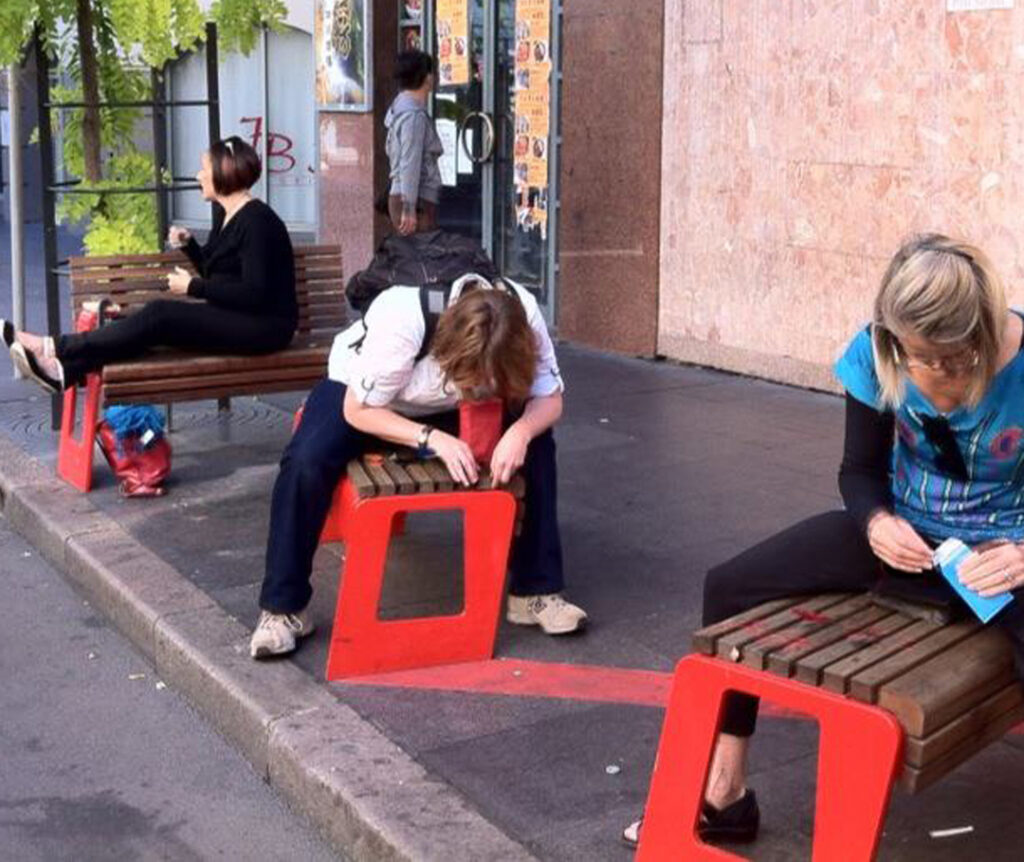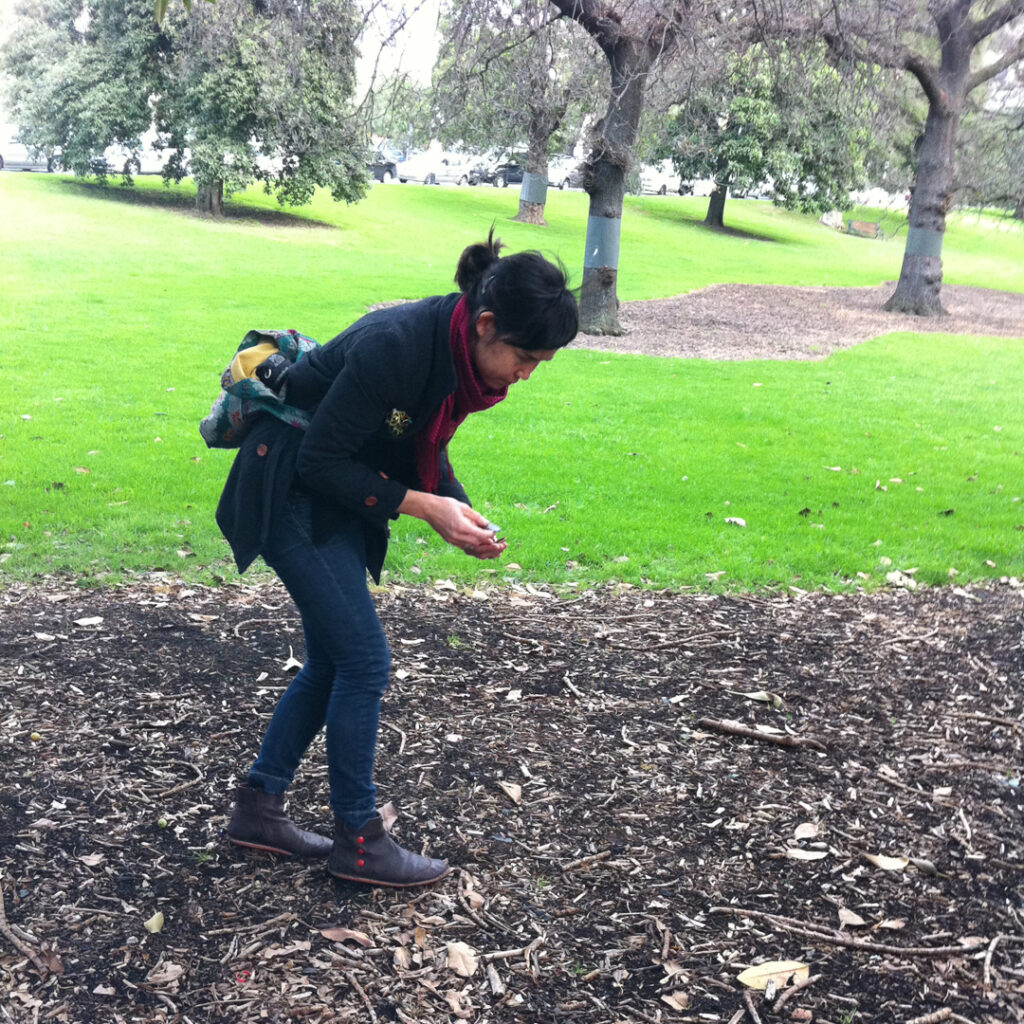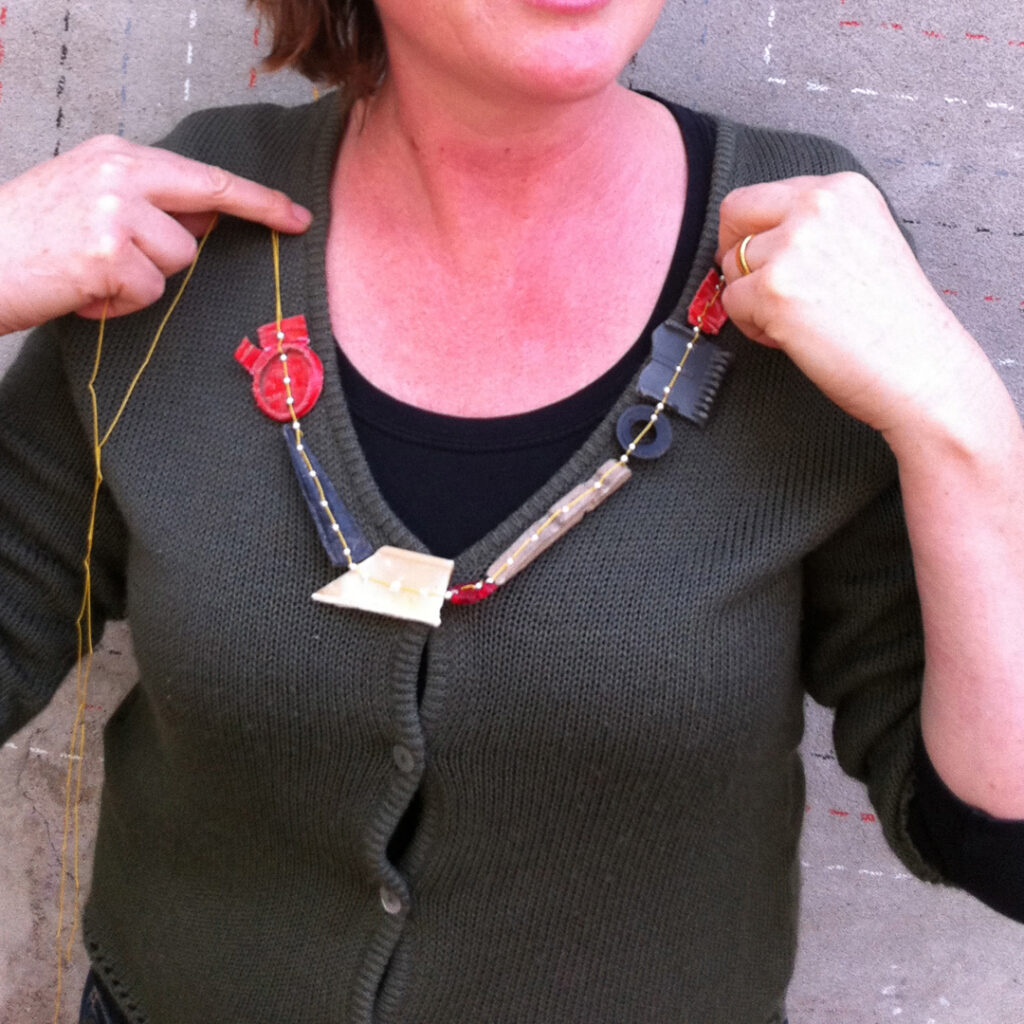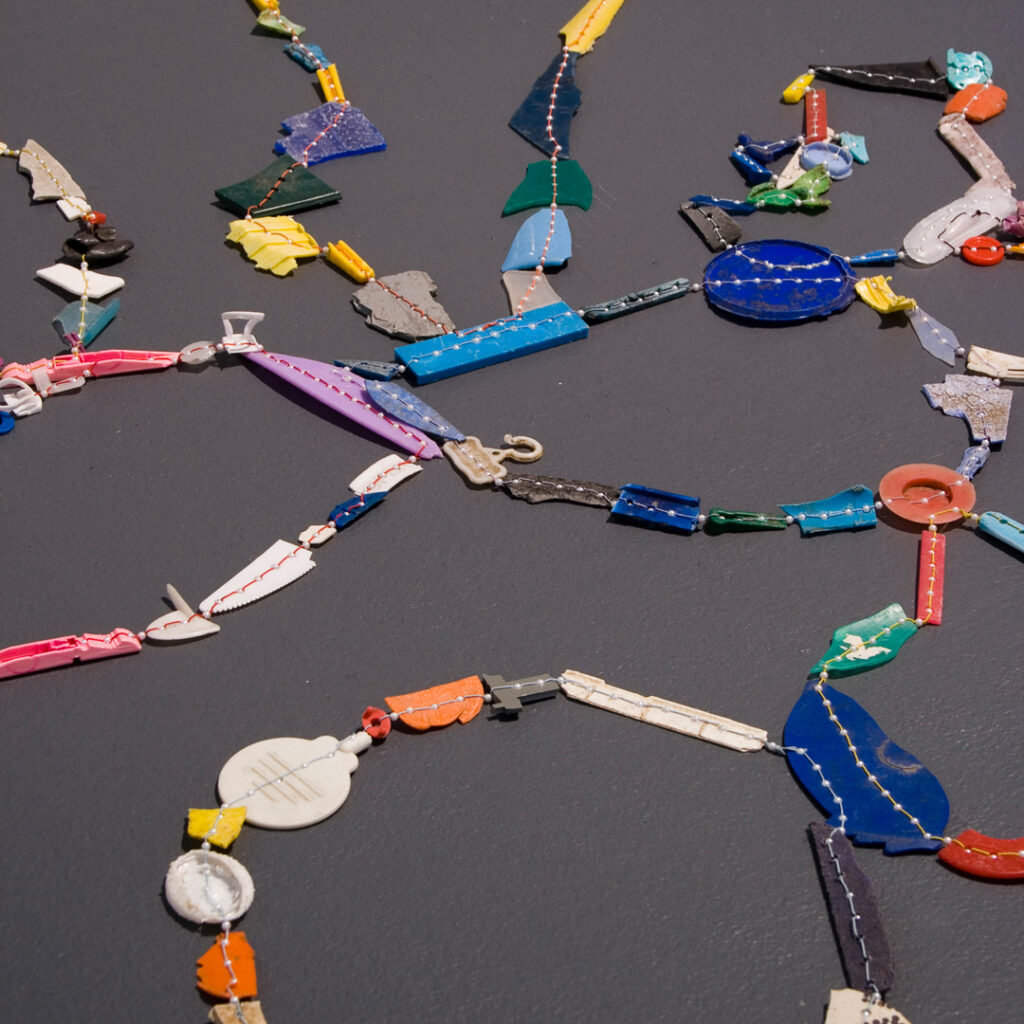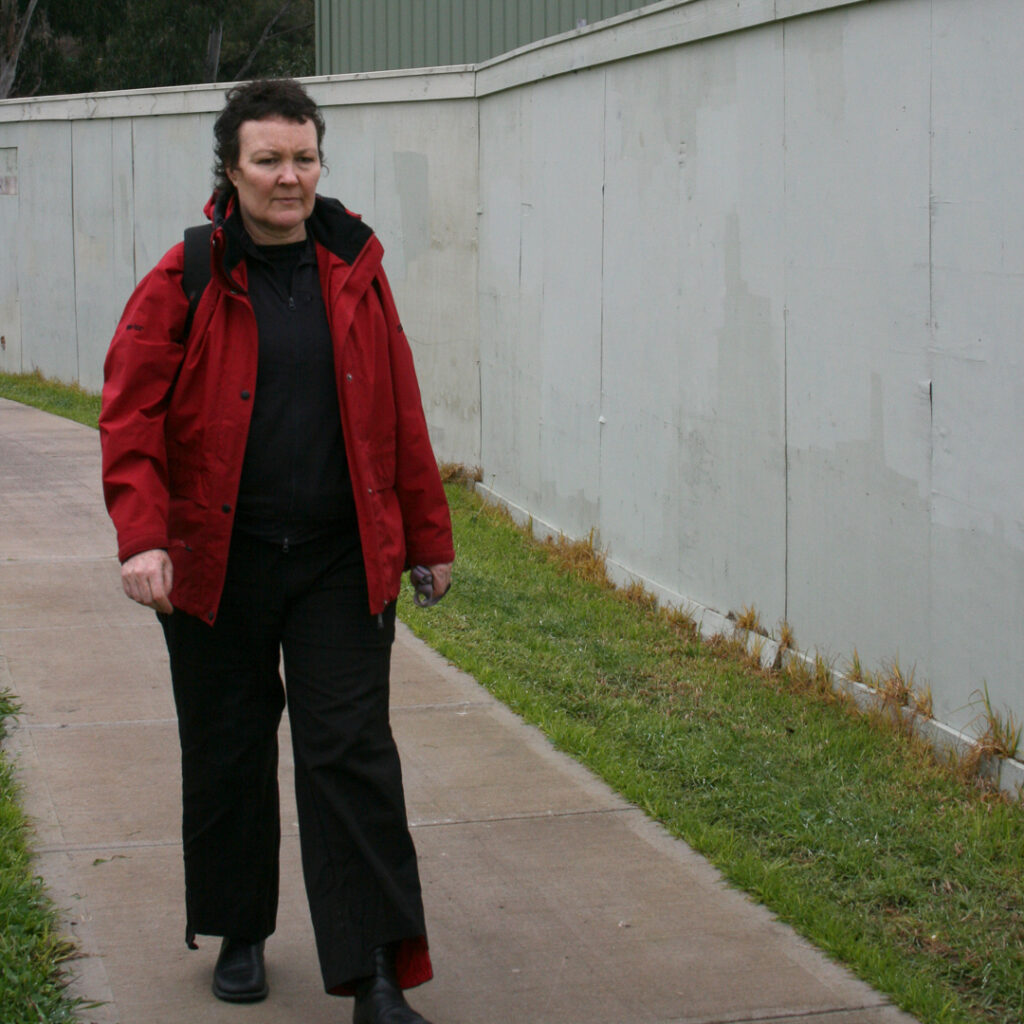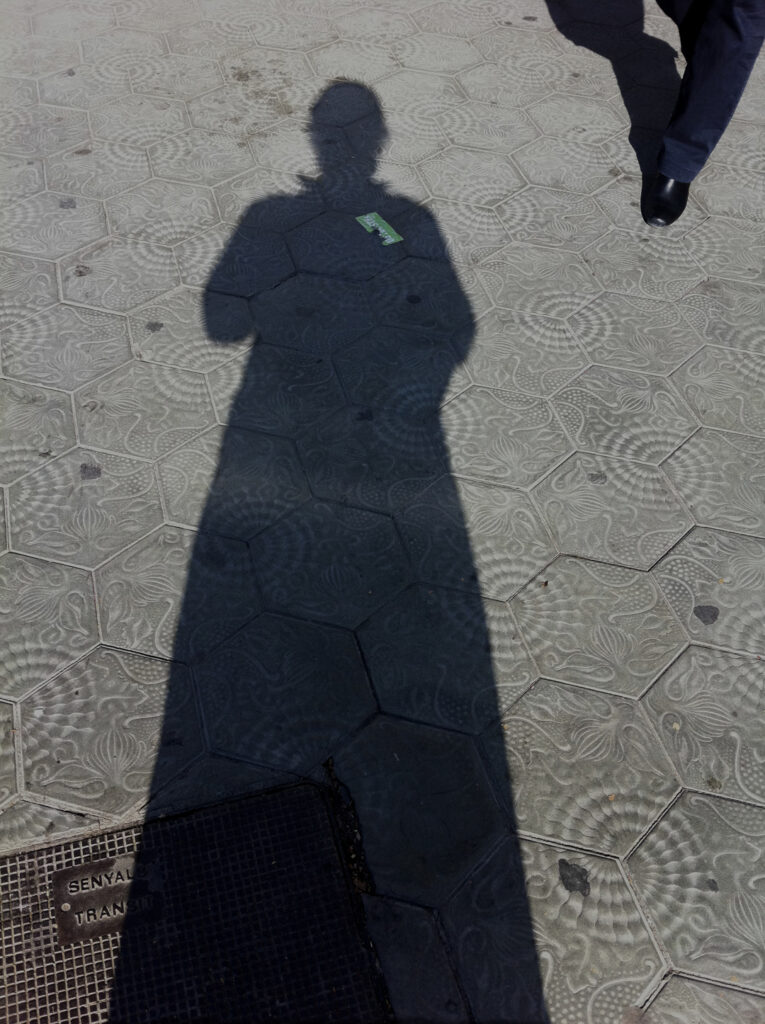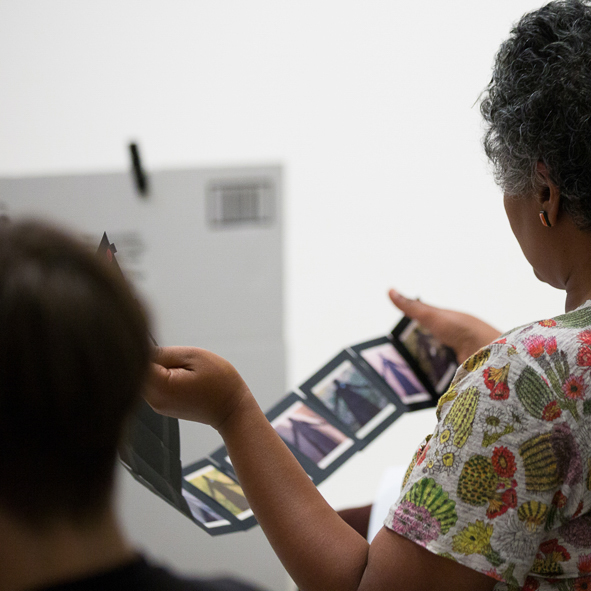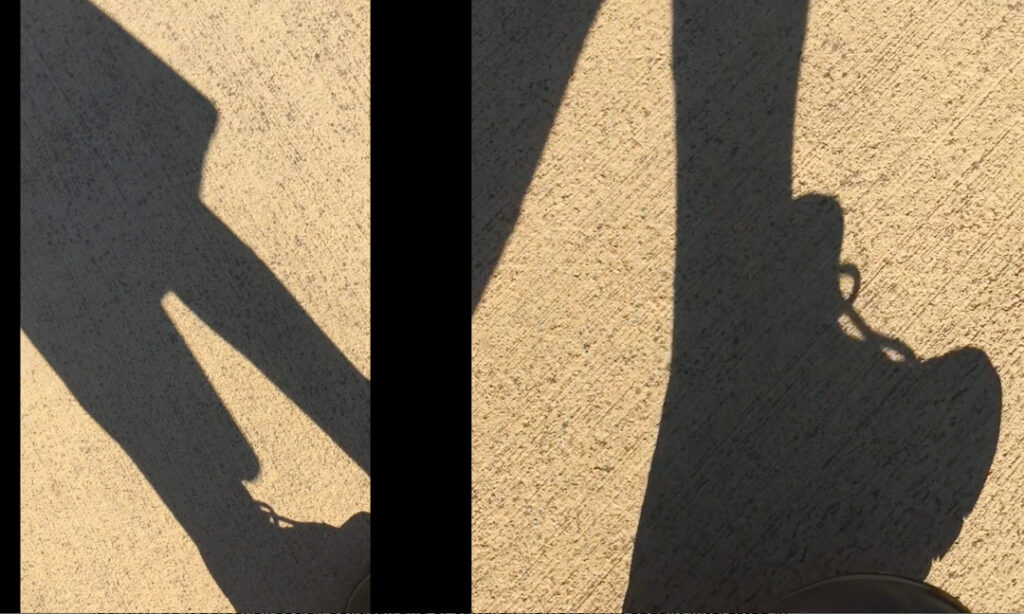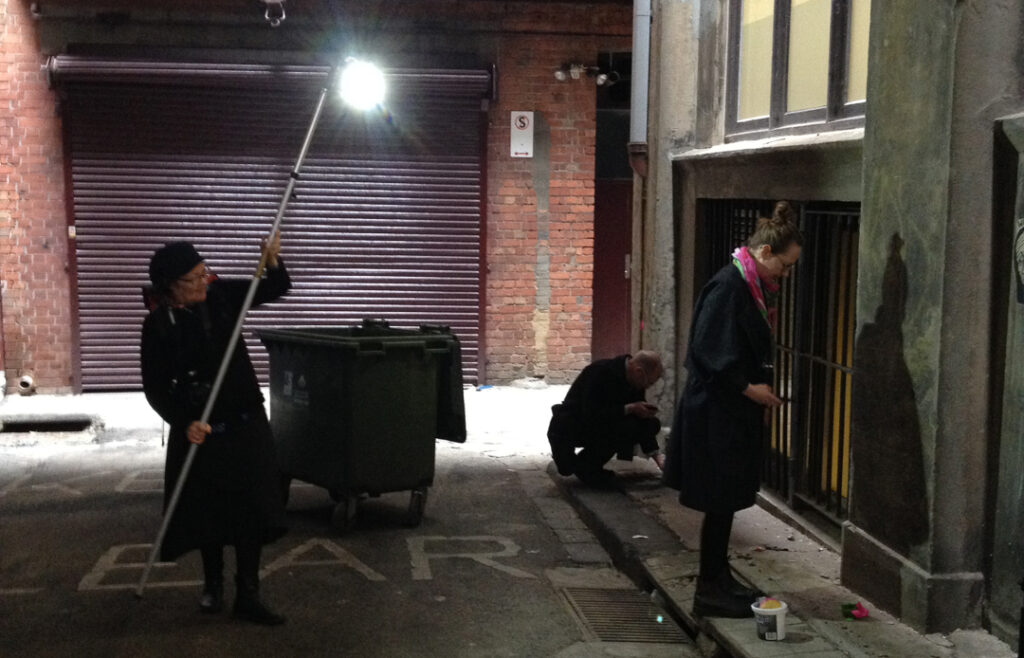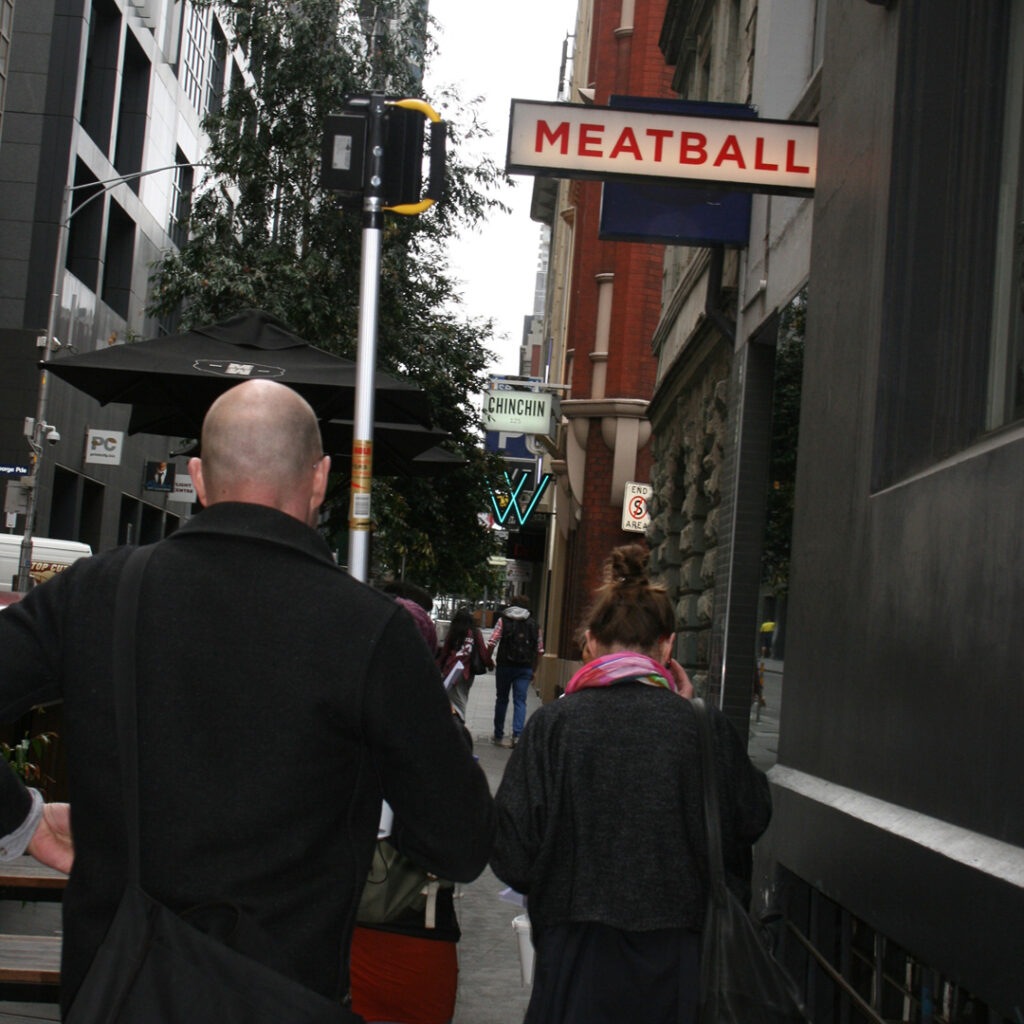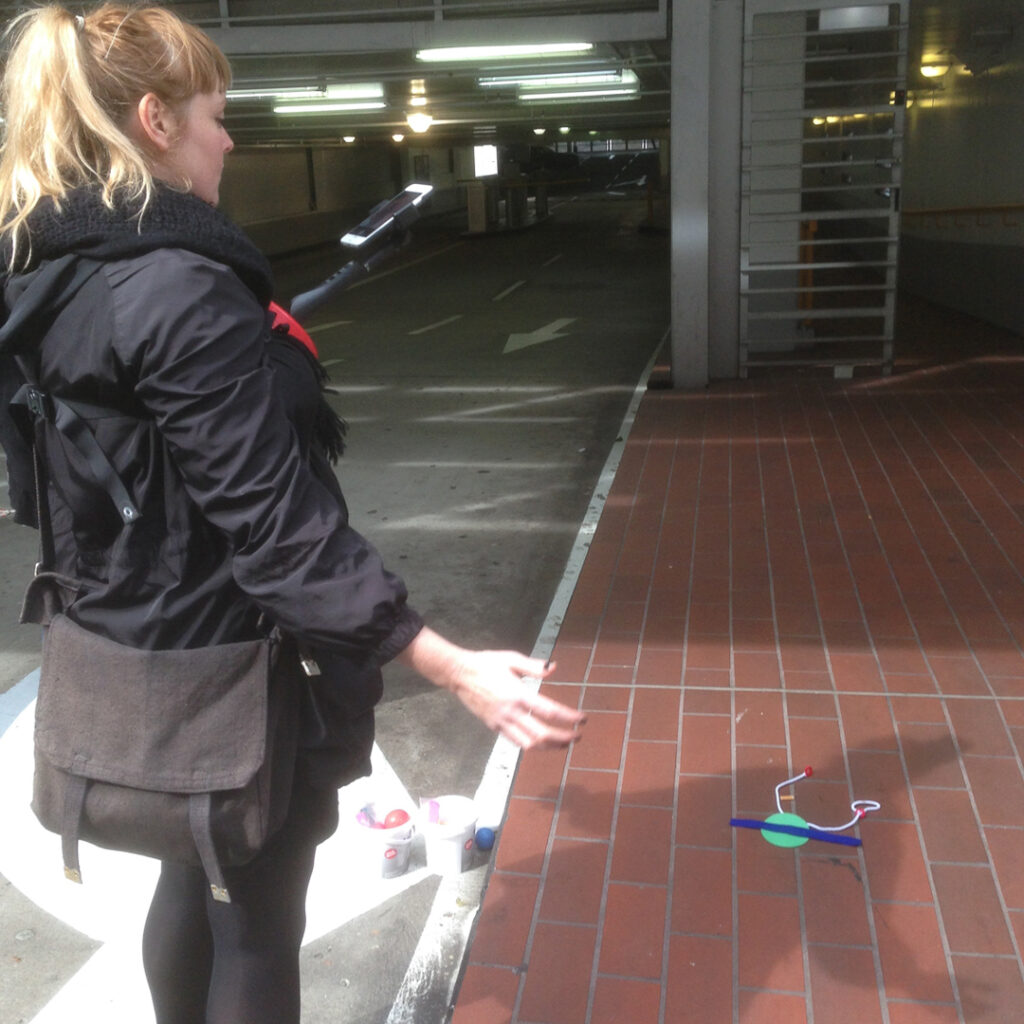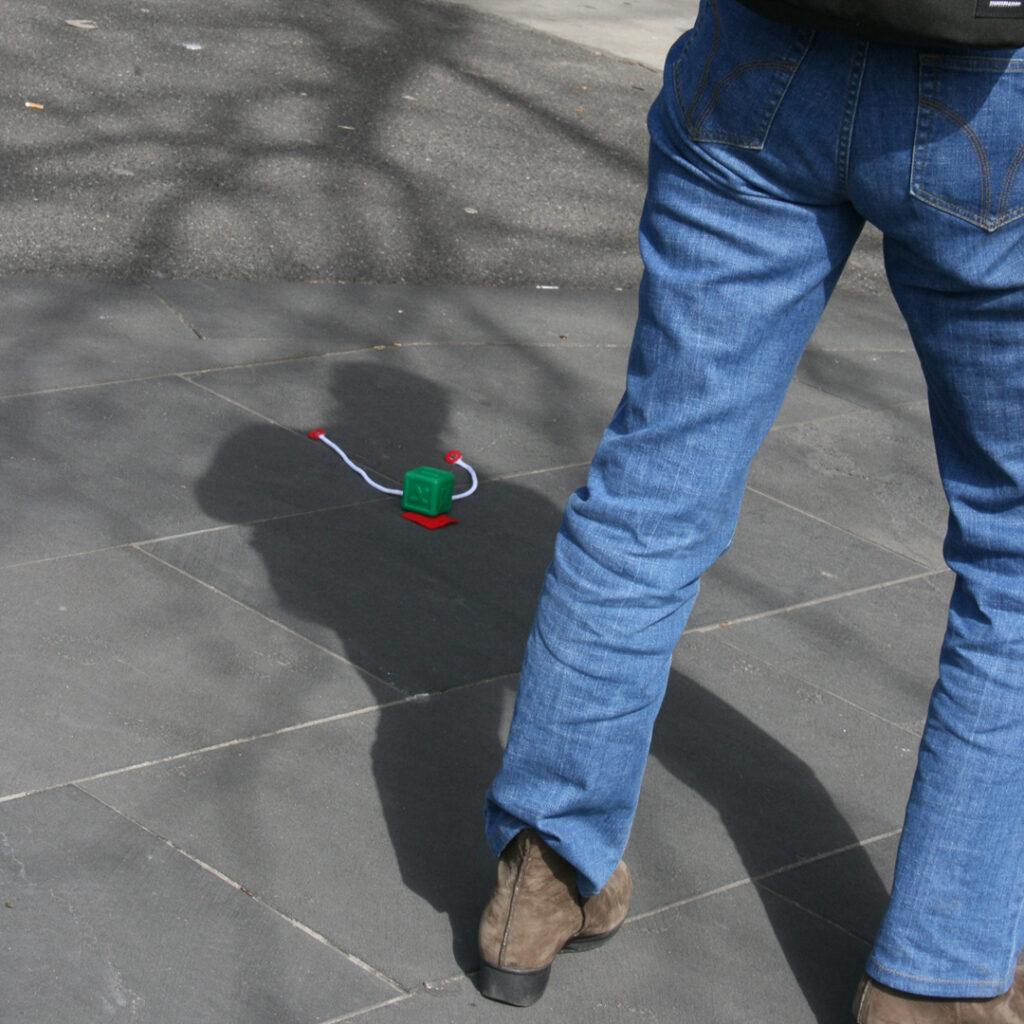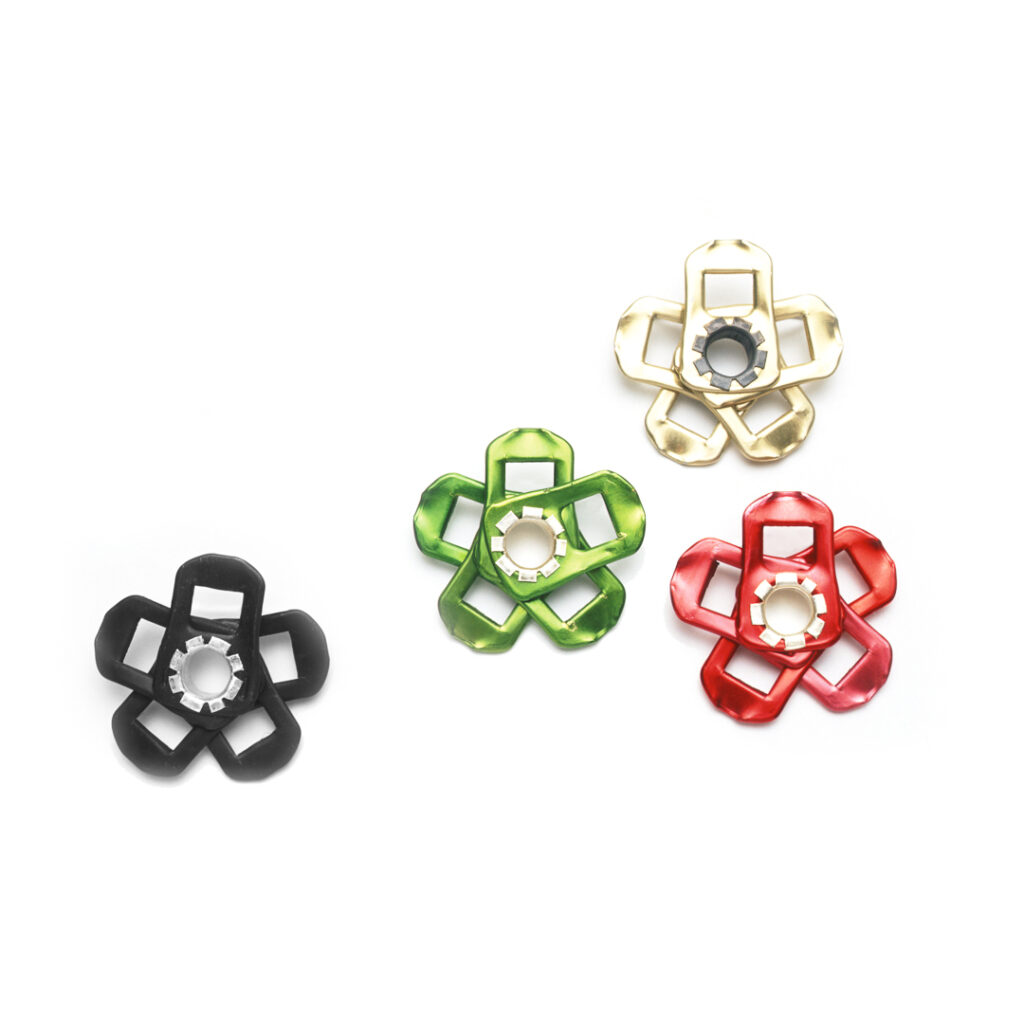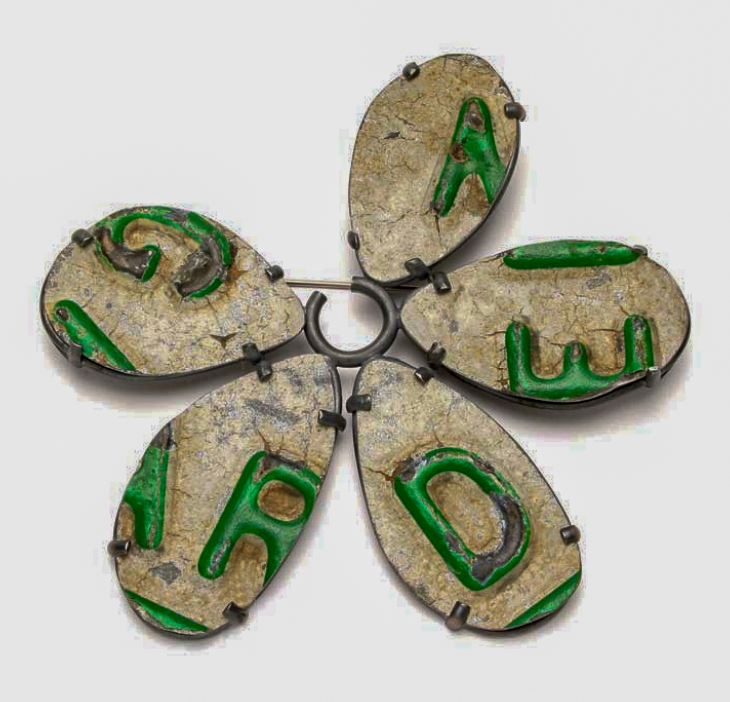Roseanne Bartley recounts a series of pathfinding projects that take jewellery to and from the streets.
“Paths need walking,” observes travel writer Robert MacFarlane, and it’s within the notion of interdependence that this essay gains momentum. Intersecting this tableau of paths and walkers—spaces and bodies—is the supplementary theme of jewellery, framed through a contemporary jewellery practice.
For those new to the trail, a working definition of jewellery generally goes like this: a decorative object worn on the human body as a means to signify status, power, and identity, be it personal, social, political, and or cultural. However, I’m equally interested in what happens if we go wayfaring with jewellery, asking questions of its autonomy, agency, and affect.
What lies ahead is the recounting of a not-so-epic quest, where, after several years in the field, I embarked on a journey to question everything I knew about jewellery. I began to reimagine jewellery as a verb, emphasizing its role as a dynamic process rather than a static object. By introducing social processes and public making into my repertoire, I proposed that within this polyamorous mix of techniques and moving bodies of matter, jewellery, both aiding and abetting, could more freely intermingle or “correspond,” as Ingold suggests, within a “meshwork” of lively human and non-human interactions.
Years before undertaking a period of practice-led research, I relocated from Aotearoa New Zealand to Naarm Melbourne to study gold and silversmithing at RMIT University. Upon graduation, I chose to remain in Australia, but for some time I grappled with an underlying sense of dislocation—not only from my place of birth but also from the dominant culture in which I resided, its political narratives founded in colonialism, and its overbearing relationship to the land, or country as referred to by First Nations peoples. While I wasn’t intentionally one of “the disconnected people” identified by indigenous writer Victor Steffensen, I felt out of place.
At this juncture, I was working with text and remnants of material consumption. I explored alphabetic/botanic patterns, the Australian vernacular, and how detritus could tell of the social habits, leisurely activities, and seasonal weather patterns within the suburb in which I lived—an amateur approach I termed Surface Archaeology. By surface, I was referring to both the liminal topographical zone (the Anthropocene), which holds the relatively recent material residue I was interested in (remnant woods, plastics, and metals), and the depth of connection to the urban environment that I felt I and many others operate within. Official pathways, such as council surveys or historical societies, are one way to obtain data on community interests and services. However, I was more interested in following the desire lines, where and how people and things played, strayed, and got waylaid. I wasn’t attempting to souvenir what was memorable about my suburb; rather, I sought to highlight the localised, under-acknowledged cultural value of the suburban.
Encouraged by Jane Bennett’s notion of “vibrant matter”—those troublesome objects, materials and forces that participate in shaping events and experiences—my involvement in the networks of urban detritus began to deepen. I realised that the separation between the processes of walking and gleaning and studio making was artificially imposed. It felt unnecessary to remove my creative process from the other modes of material transformation that were already in motion: organic and inorganic processes brought about by leisure activities, weather events, illegal dumping and transportation, to categorise a few. We were on the tail end of a lengthy period of drought and, in an effort to deepen my appreciation of the impacts of human and non-human activity on the environment in which I lived, I began to experiment with an ambulatory technique of collecting and making jewellery during extended walks along the Merri Creek shared trail, surrounding streets, and parklands.
Seeding the Cloud: a walking work in process (2010 –)
- Seeding the Cloud: a walking work in process. 2010 – Jacqui collecting
- Seeding The Cloud, A walking work in processk, 2010, participant
- Seeding the Cloud, A walking work in process, 2010, detail
- The process begins with going for a walk: Wear comfortable shoes, allocate 2-3 hours in the morning is best.
- Equip yourself with a backpack containing essential tools: Hand drill, drill bits, scribe, wooden wedge with a hook attached, wooden block with screws drilled into the top, silk thread, pearlescent plastic beads, glasses, water bottle, collection bags, rubber gloves, and a sun hat.
- Pickup fragments of hard plastic: Explore crevices, corners, and edges and liminal spaces like lane ways, playgrounds, car parks, etc.
- Pause at intervals: Adapt park seating, exercise platforms or bus stop benches as temporary workstations.
- Assess plastic: Sort them for size, colour, thickness and shape. Check for brittleness.
- Drill fragments: mark out holes, drill, and collect plastic shavings in a take-home bag. Thread plastic: Utilize the double-thread technique, inserting a bead at each drill hole and as a spacer between fragments.
- Continue the process: Walk, sort, drill, and thread until the thread’s end.
- Tie off and wear your necklace home.
When immersed in the process I was frequently led astray and went off track absorbed by the process of gathering materials and the repetitious act of beading. This ambulatory process of beading created and mapped its own network of relations. The wearable trace shifted the site of value from price point to a milieu of relationality, inviting a deeper sense of attentiveness and connection, not only to the creative process and the urban environment, but also further afield to the pelagic plastic clogging the currents of ocean gyres and poisoning the food chain.
Through national and international iterations, an extended network grew through and around the Seeding the Cloud project. I facilitated the distribution of the project by hosting walks and decentered my authorship by open-sourcing it via an instruction booklet and a very amateur YouTube video. The project was restaged by others in various locations—Hong Kong, Iran, Dunedin, Edinburgh, Canberra, Auckland. Through these beaded layers of circulation, I caught a glimpse of the co-constituted makings of the “first” necklace makers and began to fantasize about an alternate origin story and scenography for practices of jewellery than the modernist Western version I had been scripted in.
During a three-day stopover in Barcelona, and without access to tools of my trade, my grasp on the making of autonomous jewellery objects, the pathway most favoured by the Contemporary Jewellery Movement and its subsequent waves, momentarily loosened from the established applied art storyline.
My Shadow Wears: Barcelona 2013
- My Shadow Wears: Green Ticket Barcelona 2013
- My Shadow wears, handsfree booklet, 2017.
- Untitled. video still, 2017
The day begins in the familiar manner of a walk, though, on this occasion, my sense of location is uncertain, and I lack a specific plan. I feel disoriented, more out of my body than in it, a sensation intensified by jet lag. While I know parts of the city from a previous artist’s residency, the lack of a specific task leaves me feeling somewhat adrift. Stepping out the door, I’m filled with the anticipation of opportunity that comes with a life that is “not fully joined up, not fully articulated.”
I allow myself to meander, weaving in and out of foot traffic. To centre and familiarise myself, I begin a practice of surface archaeology. Like in Rebecca Solnit’s book Wanderlust, “I catch sight of what at a little distance looks like a jewel or a flower.” Although, instead of dismissing small debris as trash, as Solnit does, I suspend my disbelief. If it’s caught my eye, I usually insist on picking it up because later I won’t be able to resist thinking about its potential as something wearable.
On this particular morning, the brightness of the sun and the time of day conspire and my rule begins to function more like a prompt. Rather than immediately pocketing selective debris, I surprise myself by casting my shadow in relation to it. Veering and pitching forward, I project my silhouette towards debris on the ground, aligning material residue as if it were already appointed as an ornament. My attempt to engage and simultaneously index a brooch is captured on the screen of my smartphone. With hands slightly forward, I continue the process, framing the alignment of the cast shadow with debris-ornament using the phone screen.
Within the to-and-fro of doing and seeing my bejewelled silhouette on the screen, I sense a loosening of the armature between the precious jewellery of the jewel and the identifying features of me, myself, I. In practising this ornamental penumbral technique, my sense of identity begins to unfasten from the spectre of self, and correspondingly, the debris “brooch” appears to detach from the characteristic preciousness of a jewel. The cumulative effect of this non-precious non-preciousness event of jewelling absorbs me. Time and space merge as I/we are carried along by the technique of broach/brooching, wayfinding the city streets by way of a train ticket, pie bag, chocolate wrapper, scrunched paper, chewing gum, cigarette butt, and a plastic bag.
It’s possible to view the broach-brooching technique as a ghosting of jewellery, an apparition that proposes to flatten our anthropocentric attachment to the jewel. The anthropological implications of abstract thought are said to separate us from other sentient beings. However, this experience seemed to support political theorist Jane Bennett’s account of “the extent to which human being and thinghood overlap, the extent to which the us and the it slip–slide into each other.” Feminist theorist Karen Barad also notes that “‘Environments’ and ‘bodies’ are iteratively co-constituted.” “Bodies (‘human,’ ‘environmental’ or otherwise) are integral ‘parts of,’ or dynamic configurations of, what is” and it is from Barad’s notion of co-constituted that I felt compelled to ambitiously yet naively script an alternate storytelling means to account for the origins for jewellery.
Sidetracked and once again in Melbourne, I ventured out on several shadow-casting walks using a makeshift accoutrement: the conveniently named (yet indelicately titled) strap-on selfie stick. Images taken from these walks were mounted into a concertina booklet, the performativity of which evoked a similar gesture in the hands of the beholder. I also printed the images as postcards and exhibited them in Mailbox Art Space, an artist-run initiative located in the foyer of a building in the CBD. From here, we headed out on walks in which I invited participants to indulge with me in the making of a Paleo fantasy exploring ornament through the handheld and hands-free shadow cast technique.
Notes from a Paleo fantasy
- Paleofantasy Walks, 2015
- Paleofantasy Walks, 2015
- Paleofantasy Walks, 2015
- Paleofantasy Walks, 2015
Intuitively, we form a procession; in single file, our pace is meandering. Even though I’ve taken the bookings, I haven’t fully planned our route. Our way forward is chartered according to the nearest available light source: cultivated light (hand-held spotlight), artificial light (existing foyer, mall, or parking lot light), and natural light. I guide fellow paleo-fantasists down a scaffold-covered side alleyway. It’s dark, dusty, and smells of urine, and I am quietly thrilled by the theatrics of the space. Let’s imagine, I say, this is where it all began and this is the site of the Blombos cave.
Emptying buckets of felt, plastic, and paper shapes, participants begin to sort them, arranging them as symbols on the ground and walls. Holding the spotlight high, one by one, I back-light each of them in turn. Where acting out what I refer to on occasion as a paleo-fantasy. Our gestures may not be cast in the same configuration that Plato envisaged with his cave allegory, but small shifts in our perception begin to occur just the same. It’s music to my ears when I overhear “I’ll never think of jewellery or the city in the same way again.”
The previous passageways offer a limited account of exercises in ambulatory jewellery initiated through walking and furthered by social process and public engagement. These works are adaptable to localised re-enactments and participant elaborations. The makings of these projects paved the way for alternate desire lines of jewellery practice to emerge, influencing my thinking and approach to the relational scenography of jewellery. In this literary rendition, I positioned the operations of contemporary jewellery within the broader workings of the accessory, as well as the meta praxis of ornamentation. According to podcaster Joshua Schrei, “the word ‘adorn’ and ‘ornament’ relate directly to the word ‘order,’ to the pattern of the cosmos.” Schrei suggests that, rather than jewellery forms representing the world in abstraction, “to adorn has also been associated with aligning to a greater pattern, a pattern evident in the harmonic structures of nature and expressed in the aesthetics of culture and ritual.”
It appears that bodies need adornment and vice versa.
- Roseanne Bartley, Found Out 2003 Aluminium, Sterling silver, stainless steel 30mm; photo: Terence Bogue
- Roseanne Bartley, Victoria’s Garden 2005 Aluminiuim Number Plate, Sterling Silver, Stainless Steel 75x75mm
Further Reading
Barad, Karen. 2007. Meeting the Universe Halfway Quantum Physics and the Entanglement of Meaning. 2nd ed. Durham; London: Duke University Press.
Bennett, Jane. 2010. Vibrant Matter: The Political Ecology of Things. Durham; London: Duke University Press.
Ingold, Tim. 2013. Making: Anthropology, Archaeology, Art, and Architecture. GB: Routledge.
Langley, Michelle. 2018 How ‘bling’ makes us human.
MacFarlane, Robert. 2012. The Old Ways: A journey on foot. England: Penguin Books Ltd.
Solnit, Rebecca. 2000 Wanderlust: A History of Walking. Penguin
About Roseanne Bartley
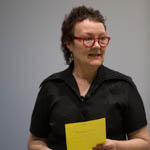 Roseanne Bartley (PhD, Melbourne/Naarm) is an artist-jeweller whose practice focuses on the social and symbolic function of jewellery in studio, exhibition, and public engagement situations. She works with text, found objects, peripatetic, and social processes, devising solo and participatory activities that yield jewellery in wearable and non-wearable formats, inclusive of objects, performance trace, video, and printed material. She was awarded an ARC scholarship in 2014 to study her PhD in the School of Architecture and Design, an Australia Council Barcelona residency in 2006, and has received support from Australia Council (2001, 2004, 2012) and Arts Victoria (2001, 2008), Punctum, and the Ian Potter Foundation. Her work has been exhibited nationally and internationally in New Zealand, Munich, the United Kingdom, New York, Thailand, the Netherlands, and collected by NGV, Powerhouse Museum, and Toowoomba Regional Gallery.
Roseanne Bartley (PhD, Melbourne/Naarm) is an artist-jeweller whose practice focuses on the social and symbolic function of jewellery in studio, exhibition, and public engagement situations. She works with text, found objects, peripatetic, and social processes, devising solo and participatory activities that yield jewellery in wearable and non-wearable formats, inclusive of objects, performance trace, video, and printed material. She was awarded an ARC scholarship in 2014 to study her PhD in the School of Architecture and Design, an Australia Council Barcelona residency in 2006, and has received support from Australia Council (2001, 2004, 2012) and Arts Victoria (2001, 2008), Punctum, and the Ian Potter Foundation. Her work has been exhibited nationally and internationally in New Zealand, Munich, the United Kingdom, New York, Thailand, the Netherlands, and collected by NGV, Powerhouse Museum, and Toowoomba Regional Gallery.

